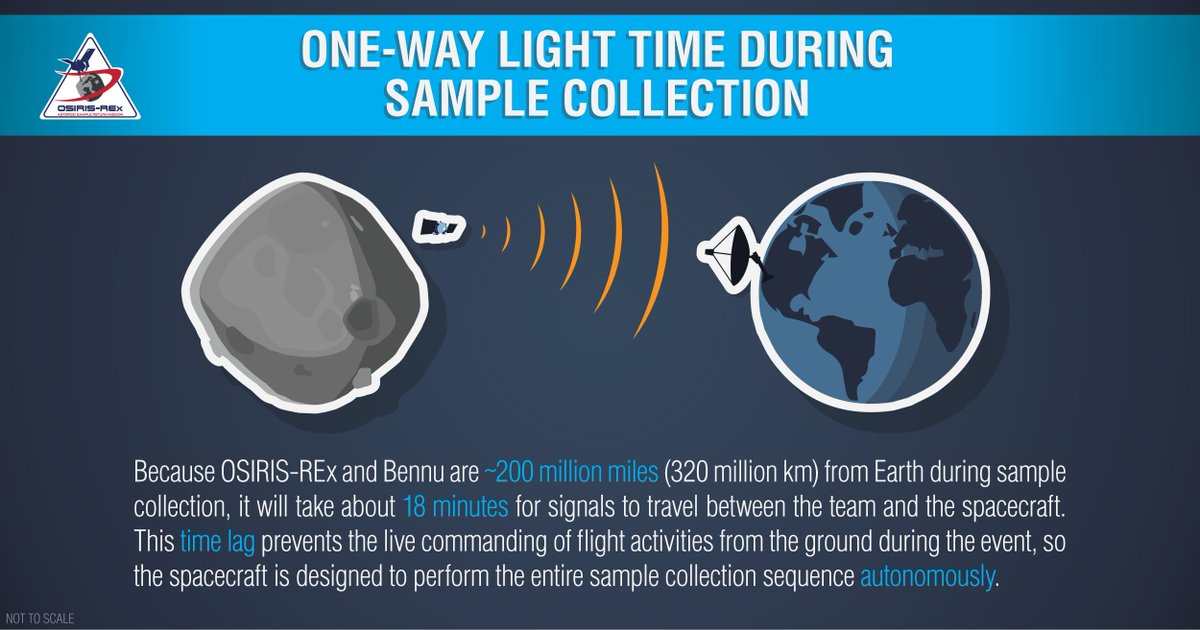Today I executed Asteroid Approach Maneuver-1, the first in a series of engine burns to dramatically reduce my speed relative to Bennu. I'll conduct three more AAMs over the next couple months, preparing to match the asteroid's speed and safely fly around it. #WeBrakeForAsteroids 

Before my braking maneuver this morning, I was cruising along at about 1,099 miles per hour (491 m/sec) relative to Bennu. At that clip, I could have traveled from New York to Miami in an hour. ⏱ #WeBrakeForAsteroids 

My first Asteroid Approach Maneuver (AAM-1) was a main engine burn designed to slow my roll to about 313 miles per hour (140 m/sec) relative to Bennu. At that speed, I could still travel from San Francisco to Los Angeles in an hour. bit.ly/AAM1Prelim ⏱ #WeBrakeForAsteroids 

After AAM-2 in a couple of weeks, I'll slow down to about 11.8 miles per hour (5.3 m/sec) relative to Bennu. At that pace it would take me an hour to travel the length of Manhattan. ⏱ #WeBrakeForAsteroids 

After AAM-3, my speed relative to asteroid Bennu will drop to about 0.24 miles per hour (0.11 m/sec). At that pace, traveling from the ground floor to the top of the Empire State Building would take about an hour. ⏱ #WeBrakeForAsteroids 

Finally, after AAM-4 in November, my speed compared to Bennu will be about 0.10 miles per hour (0.04 m/sec). At that rate, I could fly three lengths of an Olympic swimming pool in an hour. ⏱ #WeBrakeForAsteroids
Full infographic: bit.ly/AAM1Info
Full infographic: bit.ly/AAM1Info

• • •
Missing some Tweet in this thread? You can try to
force a refresh












